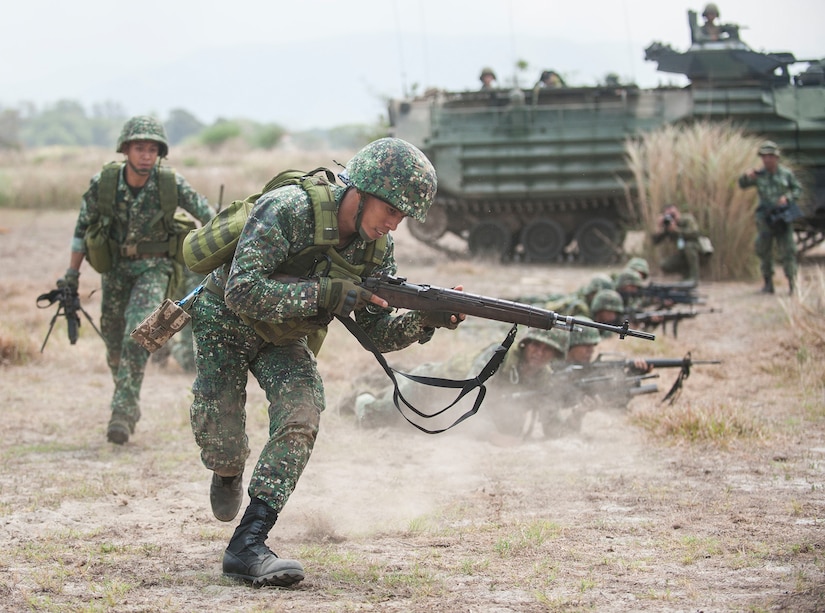By Marine Corps Staff Sgt. Jackie Sanders, III Marine
Expeditionary Force
CLARK AIR BASE, Philippines -- U.S. and Philippine armed
forces work to cultivate strong partnerships between the two nations by
exchanging and demonstrating best practices and procedures during exercise
Balikatan 2018, scheduled May 7-18 at various locations across the Philippines.
This year marks the 34th iteration of the annual training
event focused on a variety of missions including humanitarian assistance and
disaster relief, counterterrorism, and mutual defense. This year’s Balikatan
also focuses on interoperability training events designed to enhance the
combined capabilities of both the Philippine and U.S. armed forces.
Balikatan 18
‘We Want to be Interoperable’
“We came to Balikatan because we want to be interoperable
with the Philippine military and with our joint counterparts,” said Air Force
Lt. Col. John Matuszak, Balikatan exercise coordinator and deputy commander of
the 36th Contingency Response Group from Andersen Air Base in Guam. “We learn a
lot from each other just by talking and asking questions about how we do
things.”
Balikatan is a Filipino term that means “shoulder to
shoulder” or “sharing the load together” and characterizes the spirit of the
exercise. Over the next several days, both nations will participate in multiple
subject matter expert exchanges designed to enhance their capabilities.
“The good thing about these activities is that the subject
matter experts in each area give their best practices to their counterparts,”
said Philippine air force Maj. Arvin Gundran, operations director of the 600th
Air Base Group and Balikatan subject matter expert exchange coordinator for the
Philippines.
Cooperation
With Balikatan 2018, as in previous years, both nations will
benefit from the increased cooperation and understanding during real-world
missions.
This process allows us to both learn and teach in areas that
we are responsible for, including base security, aerodrome operations and other
base services, Gundran explained.
"The 36th CRG has a long history with this exercise and
we’ve been coming here for the past two decades," Matuszak said. "We
both participate with the intent of learning from each other, and this all
builds a certain level of trust. Even if we’ve been gone for months, we can
rely on the critical connections we make here."
The exercise is scheduled to incorporate multiple SMEE
individuals, including command and control, flight operations, pararescue
procedures, combatives and a simulated mass casualty response.

No comments:
Post a Comment